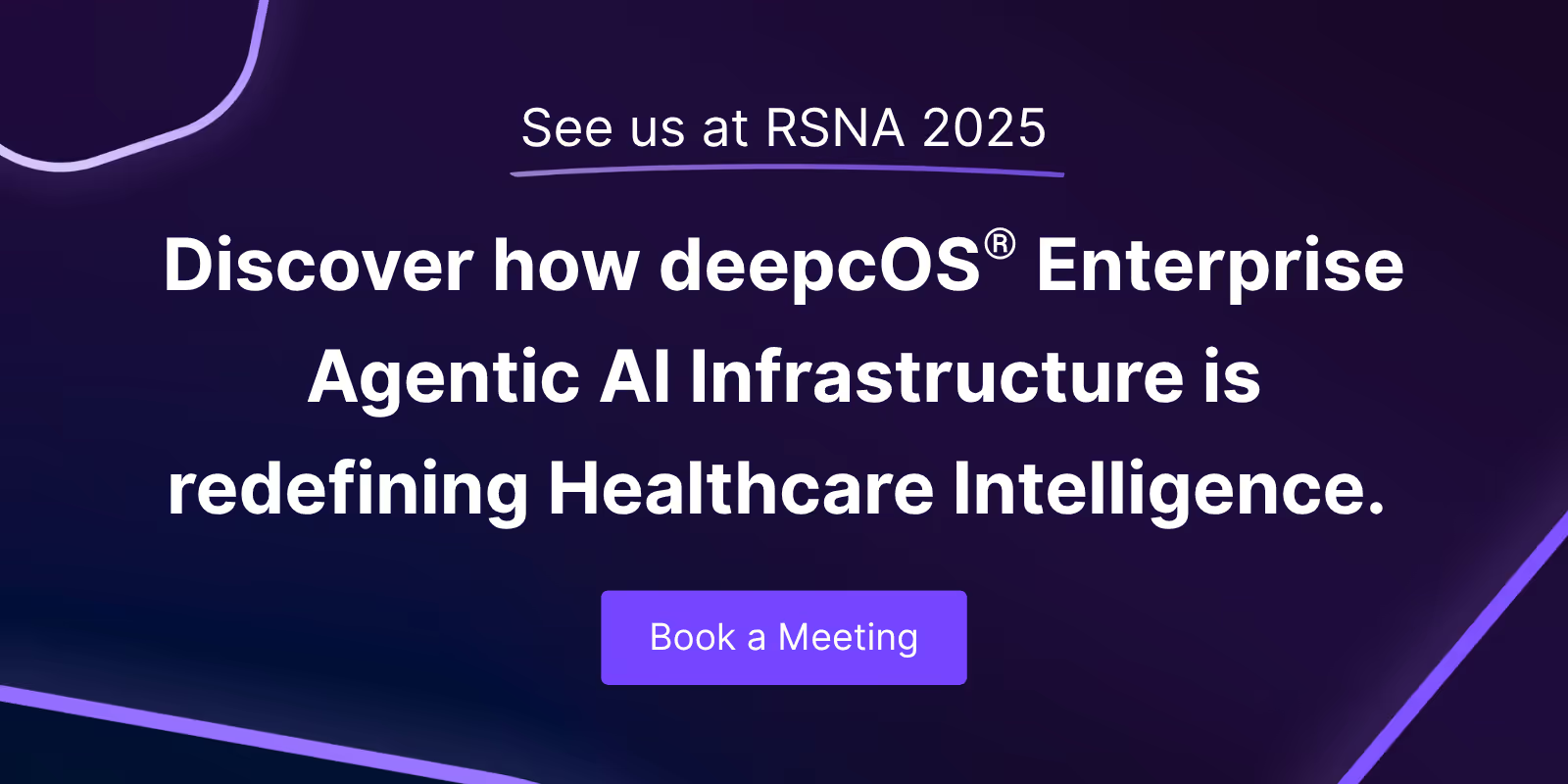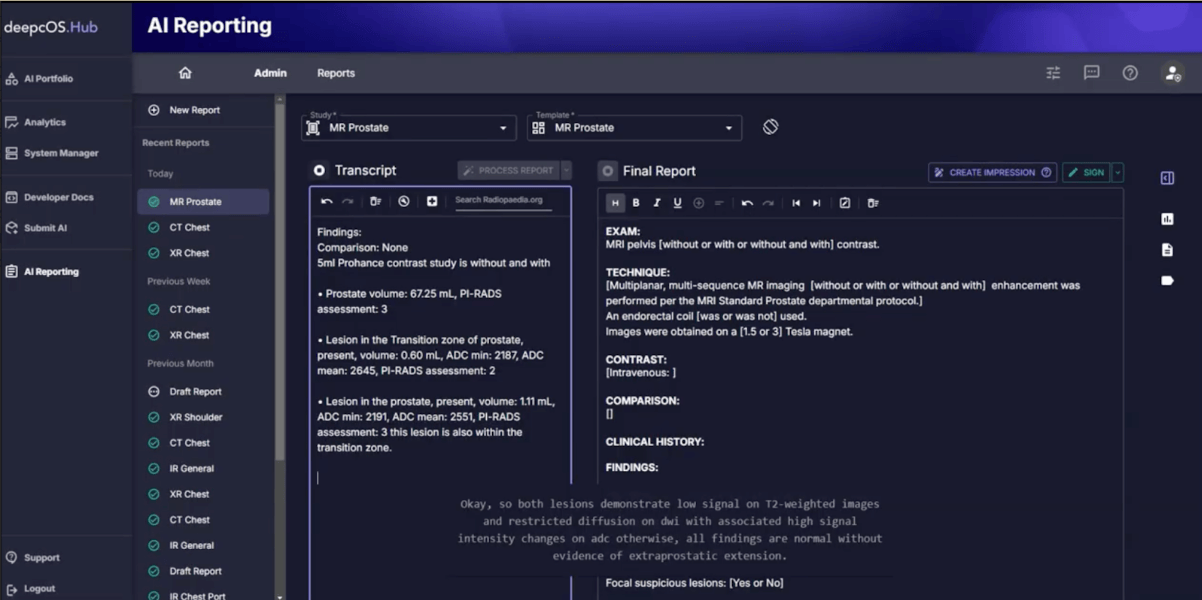The hidden cost of broken integration
Hospital IT leaders often spend months integrating AI tools, only to see radiologists abandon them. Results arrive late, appear in the wrong place, or require extra clicks. The technology works, but the workflow fails. This disconnect explains why many AI pilots never scale across the enterprise. True adoption depends not on the algorithm itself, but on how seamlessly it fits into RIS, PACS, and EHR environments.
How to integrate AI into PACS and RIS without workflow disruption?
Radiologists work under pressure. If AI adds clicks or delays, it is sidelined. Integration is adoption; only when tools fit invisibly into daily routines do they gain lasting use. CIOs and IT leaders face this reality. Their priority is stable, compliant, and scalable architectures that work across multiple vendors without constant maintenance. They need to deliver innovation without destabilizing legacy systems, protect data privacy, and demonstrate clear return on investment.
What are clinical APIs and why do they matter?
Clinical messaging standards and APIs are the translators that make interoperability possible. HL7 V2 carries orders and results; FHIR enables structured, queryable data for EMRs and research; GraphQL supports targeted queries for reporting and analytics; and webhooks deliver real-time notifications to keep worklists updated. Together, they enable what can be called “quiet integrations,” connections that strengthen workflows without being noticed.
deepcOS® in action
deepcOS® provides one integration into HL7 and DICOM streams, from which hospitals can deploy multiple AI models. It orchestrates routing so the right exams reach the right AI applications, and results return in formats that fit existing systems. Radiologists see overlays in PACS, status updates in worklists, and structured data in reporting systems without additional portals or manual transfers.
A practical example highlights the point. A hospital configures all non-contrast head CTs to run through an intracranial hemorrhage model. Orders and images trigger automated processing. A webhook updates the radiologist’s worklist as soon as there’s an update on the processing status. The PACS viewer displays an overlay marking potential bleeds. Structured AI measurements feed directly into the draft report with clinical details from the HL7 order message prefilled alongside the study metadata. The process is invisible to the user, yet adoption follows because workflows remain intact.
Building trust with explainability and monitoring
Hospitals increasingly require more than integration alone. Clinicians expect transparency in how AI reaches conclusions, as well as the ability to review or override findings. deepcOS® supports explainability by embedding AI outputs as structured objects, overlays, and measurements that can be verified within the radiologist’s standard tools.
Continuous monitoring is equally important. AI performance can drift when imaging protocols, scanners, or patient demographics change. Research shows up to 30% variation in AI performance when models are used outside their original training environment (European Radiology, 2024). deepcOS® provides centralized oversight, with logging, monitoring, and local validation capabilities. This allows hospitals to detect performance shifts early and maintain confidence in daily use.
Addressing governance, compliance, and bias
Adoption depends on more than technology. Governance committees demand evidence that solutions comply with data protection laws and clinical safety requirements. deepcOS® offers centralized management to enforce permissions, log usage, and validate new models before rollout. This helps hospitals meet compliance standards while scaling AI safely.
Bias and data diversity remain pressing concerns. Many AI models underperform outside the datasets they were trained on. deepcOS® allows hospitals to validate AI performance against local data, ensuring outputs remain reliable for their patient populations. This adaptability supports fairness and clinical trust.
How deepcOS® supports AI adoption in legacy hospital IT?
Not all hospitals run the latest PACS or RIS. Many IT environments remain fragmented, with legacy systems in place. deepcOS® is designed to adapt to these conditions, whether on-premise, in hybrid deployments, or in secure cloud environments. This flexibility ensures that hospitals can deploy AI without needing full infrastructure replacement, making innovation accessible even in resource-constrained settings.
From hype to reliability in radiology AI
Seamless AI integration is more than a claim. It requires disciplined interoperability, transparent workflows, and robust governance. Radiologists benefit when results arrive in the right place, on time, without new steps. CIOs gain a stable, vendor-neutral infrastructure that scales across multiple use cases. Hospitals gain confidence that AI adoption will deliver measurable clinical value without hidden risks.
When AI becomes invisible, clinicians focus on patients rather than systems. CIOs gain confidence instead of complexity. Hospitals secure outcomes they can trust. This is what quiet integration means.
deepcOS® was built to deliver that trust. With quiet integrations powered by clinical APIs, it enables hospitals to bring AI into practice in a way that is reliable, scalable, and compliant. Explore how one integration can open the door to many AI solutions while keeping workflows predictable and clinicians supported.
Reference
- Klenske, N. (2025). Integrating Imaging Tools Helps Radiology AI Deliver Real Value. RSNA News.
- Blaj, A. (2025). HL7 vs DICOM: Decoding the Backbone of Healthcare IT. Medicai Blog.
- Denniston, A., et al. (2024). Variation in AI performance in clinical radiology. European Radiology. doi:10.1007/s00330-024-10873-7
- Grewal, J., et al. (2024). Bias and fairness in medical imaging AI. Scientific Reports. doi:10.1016/j.scimed.2024.101234
- Pew Charitable Trusts (2025). Research reveals gaps in oversight of artificial intelligence for radiology



.png)
.png)
.png)

